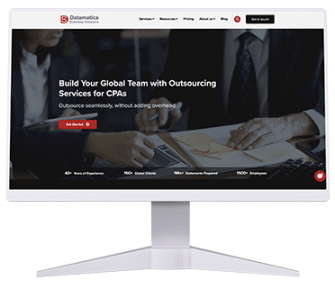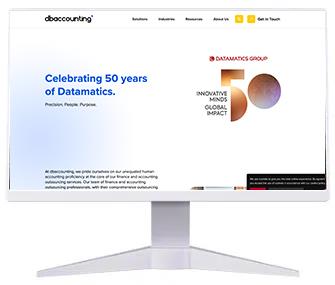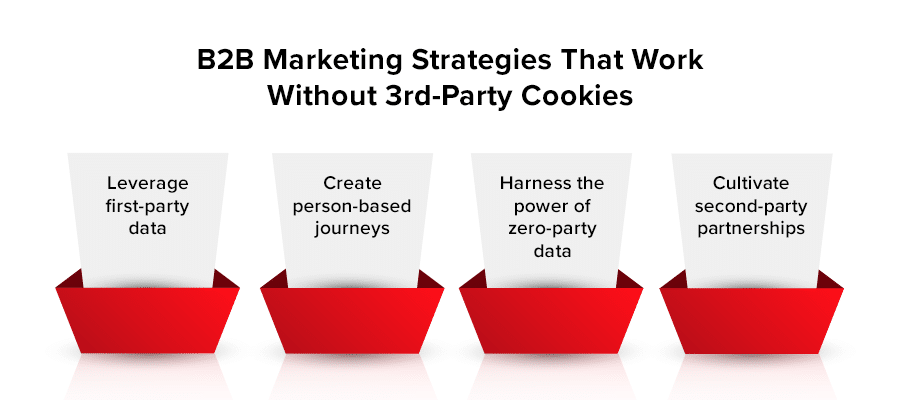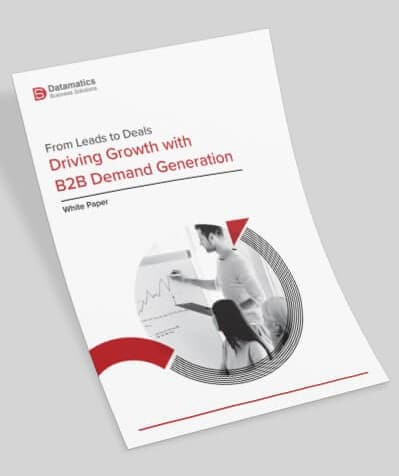Often the most efficient marketing strategies turn out to be an irritation for the end users. However mild it is, it still causes some inconvenience to the users. From painstakingly crafted email marketing campaigns to incredibly effective third-party tracking cookies, they all have been known to be a relatively efficient but marginally imperfect way to target customers. Especially, third-party cookies seemed to have been on the receiving end of the ire of web users frequently. But, to much of the web users’ delight and the agony of the marketers, come 2023, it all will end. It is when all the major web browsers across the globe will no longer support third-party tracking cookies.
Combine that with the ever-evolving regulations of the European Union’s General Data Protection Regulation, and you are looking at an entirely different playing field for the marketers come 2023. B2B Marketing leaders must brace their functions for the imminent change and build resilient yet effective toolkits to thrive in the new marketing realm fruitfully. The imminent changes are bound to primarily affect the B2B marketers relying heavily on traditional marketing methods.
Having said that, just as with any significant change, the cookie-less world does present B2B marketers with immense opportunities to build novel and powerful marketing approaches, targeting their audiences more effectively and understanding them better. While the new B2B marketing approaches will have personalization at the epicenter of it all, it will also require the marketeers to collect and build their own B2B customer database with privacy compliance, authentication, and durable IDs for their marketing campaigns. If you’re a B2B marketing leader preparing your marketing function for the cookie-less world, here are a few strategies that set you up for success.
How To Prepare for A Cookie-less World?
While the marketing in a cookie-less world is far from being a reality of every B2B marketer’s everyday life, there at least is a consensus among the marketing and sales fraternity that “personalization” has been the key to their B2B marketing in a cookie-less world success. And while there is going to be a tectonic shift in the marketing landscape in terms of customer acquisition, the B2B marketing strategies are evolving accordingly to accommodate the change. This is why you must re-evaluate your customer acquisition strategies for the cookie-less marketing world. Here are some of the most effective B2B marketing strategies to help you transition swiftly away from the 3rd-party cookies.
4 Ways of Marketing in a Cookieless World
Leverage First-Party Data
For long now, marketers depended on third-party data to personalize their campaigns. However, with the death of 3rd-party cookies, all of that will end. And thus, will begin the era of first-party data. An era that will be defined purely by the data collected directly from the customers. It will be the most authentic and relevant data for brands worldwide, as it will give them insight into their customers’ pathway to purchase, the way they interact with your brand, and the most productive channel to reach them. This data will comprise data points consolidated from your website, app, social stream, email campaigns, etc.
The end of 3rd-party data will mark the rise of personal identifiers such as email addresses and other people-based identifier as the means to reach customers as opposed to device-based identifiers. With that being said, the data from the second and third parties will continue to have relevance, it’s just that it won’t be as prevalent as before.
Create Person-Based Journeys
There has been a significant shift in the buying pattern of B2B customers in recent times. Most customers prefer a B2C-like buying experience instead of the traditional B2B way. Many modern B2B marketing strategies incorporate multi-step customer journeys explicitly carved to suit their target accounts. A connected customer experience allows brands to minimize their customer acquisition cost by as much as 50% while increasing the lifetime customer value by 25%.
While having the right buyer persona and industry insights to develop compelling customer journeys is essential, knowing the proper channels and timings to target your customers is incredibly useful. This is why most modern B2B marketers put a huge impetus on having an omnichannel strategy. An omnichannel strategy will take your brand where your customers are and get you the necessary eyeballs for your products and services. You can further lift your customer experience by harnessing the power of marketing automation tools to carve a real-time personalization experience.
While most of these strategies are equally effective with third-party data, having the first-party data will future-proof your overall marketing in a cookie-less world strategy and set you up for success in the future.
Harness The Power of Zero-Party Data
The data that a customer willingly shares with a business is called zero-party data, and since it has the customer’s consent, it is also the most valuable data for a business. But considering how hard it is to acquire the customer’s permission, zero-party data is also the hardest to get.
However, some practical ways to get this data are through email marketing, social media polls/surveys, an elaborate registration process, etc. With the growing focus on CCPA and GDPR, businesses are focused on safeguarding their customer data, making the zero-party data even more premium as it comes with the customer’s consent. However, when the customer entrusts you with their valuable data, you better deliver equal value to them. Thus, it would help if you harnessed the power of zero-party data with great care and utmost responsibility.
Cultivate Second-Party Partnerships
Second-party partnerships are forged between organizations whose businesses overlap in some way or the other or the ones that have the same customer base. An excellent example is the coming together of credit card companies and airlines for their frequent flyer miles programs. These partnerships allow you to harvest second-party data through partner websites by simply exchanging files or having containers on your partners’ websites.
While this is yet another effective B2B marketing strategy, you must ensure that your customers have complete transparency regarding their data and its use.
With Great Data, Comes Great Responsibility
The end of 3rd-party data will give tremendous rise to zero-party data in all walks of life. Businesses of all natures, shapes, and sizes will compete for zero-party to reach their customers most effectively and efficiently. It will put a considerable impetus on firms to secure their customers’ trust in their businesses and protect their sovereignty over the data they have entrusted you with. So, as you prepare your marketing and sales for the cookie-less world, you must ensure that you make the transition with utmost care and responsibility. Should you need hand holding to start your marketing campaigns in the cookie-less world, we have our B2B demand generation experts awaiting you right at the click of a button. Just right into us at: marketing@datamaticsbpm.com, and we will get in touch with you at the earliest.

Kent Wu




